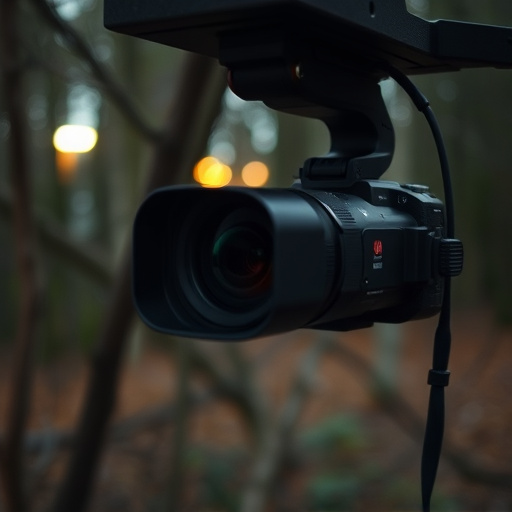Before installing a spy camera network with cloud storage, understand local privacy laws and specific technical needs like resolution and storage. Choose a secure cloud provider with encryption and regular updates to protect data from unauthorized access. Strategically place hidden cameras using wireless mesh networks for robust connectivity and maximum coverage without drawing attention. Balance security and privacy by implementing transparent practices, data protection policies, and strong encryption for ethical spy camera use.
“Uncover the intricacies of covert camera network installation with our comprehensive guide. From understanding the legal framework surrounding spy cameras to implementing robust cloud storage solutions, we delve into best practices for secure and discreet surveillance. Learn about strategic network design, ensuring optimal placement and routing while prioritizing user privacy. Discover ethical considerations and protective measures that safeguard individual rights in an era of advanced technology, where a spy camera with cloud storage can be both a powerful tool and a legal minefield.”
- Understanding Spy Camera Requirements and Legal Implications
- Selecting Reliable Cloud Storage Solutions for Enhanced Security
- Discreet Network Design: Placement and Routing Strategies
- Ethical Considerations and User Privacy Protection Measures
Understanding Spy Camera Requirements and Legal Implications
Before installing a covert camera network, it’s crucial to understand both the technical specifications and legal implications of spy cameras. Each location has unique requirements for surveillance equipment, influenced by factors such as privacy laws, lighting conditions, and the need for cloud storage for real-time or historical footage. For instance, spy cameras with cloud storage capabilities offer remote access and continuous monitoring, but they must comply with data protection regulations to ensure legal and ethical deployment.
Knowing the specific needs of your covert camera network—such as resolution, field of view, motion detection sensitivity, and storage capacity—is essential for effective installation. This knowledge ensures that you select cameras that not only meet your security objectives but also adhere to local laws governing surveillance. Understanding these requirements will help avoid legal pitfalls and ensure your spy camera network functions efficiently and responsibly.
Selecting Reliable Cloud Storage Solutions for Enhanced Security
When setting up a covert camera network, choosing the right cloud storage solution is paramount for enhanced security and seamless data management. A reliable cloud storage system acts as an invisible fortress, safeguarding your Spy Camera With Cloud Storage data from unauthorized access and potential cyber threats. Opt for providers with robust encryption protocols, two-factor authentication, and regular security updates to fortify your network’s defenses.
Consider solutions that offer geo-redundancy and data replication across multiple servers, ensuring your footage remains accessible even if one server fails. This redundancy is vital for uninterrupted surveillance, especially in dynamic environments where constant connectivity is crucial. By integrating a trustworthy cloud storage service, you can transform your covert camera network into an efficient, secure system capable of withstanding the rigors of modern digital threats.
Discreet Network Design: Placement and Routing Strategies
When designing a discreet network for spy camera with cloud storage, placement and routing strategies are key. Cameras should be strategically positioned to maximize coverage while minimizing visibility. This often involves mounting them in hidden locations like ceiling corners, door frames, or behind decorative objects. Utilizing wireless technology allows for more flexibility in camera positioning, as it eliminates the need for running cables through walls or floors.
For routing, a mesh network structure is ideal for covert operations. This design ensures multiple nodes communicate with each other, creating a robust and reliable connection. By spreading cameras across the network, data can be transmitted efficiently to the central cloud storage system without raising suspicion. Additionally, encryption protocols should be implemented at every stage to protect video feeds from unauthorized access.
Ethical Considerations and User Privacy Protection Measures
The installation of a covert camera network raises significant ethical considerations and demands robust user privacy protection measures. As technology advances, spy cameras equipped with cloud storage have become more accessible, blurring the line between surveillance and personal privacy. It’s crucial to approach this practice with integrity and respect for individual rights.
When implementing such systems, organizations must ensure transparent communication about camera placement and data collection practices. Comprehensive privacy policies should be in place, clearly outlining what data is collected, how it’s stored, and who has access. Encryption techniques and secure cloud storage protocols are essential to safeguard sensitive information from unauthorized access or breaches.
When implementing a covert camera network, it’s crucial to balance security with ethical considerations. Understanding legal implications, selecting robust cloud storage for data protection, and employing discreet network design techniques are essential best practices. Additionally, prioritizing user privacy through meticulous planning and protective measures ensures a legally sound and morally responsible surveillance system. Integrating these strategies fosters a secure environment while respecting individual privacy rights, making it possible to harness the benefits of spy camera with cloud storage technology responsibly.
